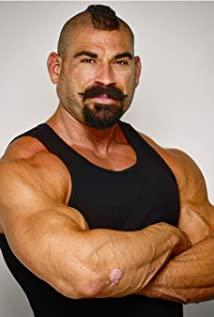How to defeat the invincible robot villain?
The villains of the "Terminator" series represent the limits of our imagination to evils of technology in different periods, and are also one of the biggest highlights of each episode.
As Adam Roberts said:
It is often a new technological object, such as a speculative technology from the future, that first makes a story a science fiction, and it is far more than just an add-on to its narrative.
(A piece of futuristic, extrapolated technology is most often the technological novum that distinguishes a story as SF in the first place and is, therefore, more than merely a decorative addition to its narrative.
"Science Fiction")
From Heracles T-800, where "Terminator" debuted, to T-1000, the nightmare-like liquid robot in "Terminator 2", to "Terminator: Dark Fate" whose narrative is next to the two. In ", the robot villain has become more and more powerful-almost invincible:
In addition to the trick of dividing itself in two, the biggest upgrade of REV-9 this time is that it can access the technology of the entire society of control to chase down.
Therefore, REV-9 has also become the incarnation of this technology (a direct, material embodiment).
In a controlled society, it is difficult for anyone not to leave a digital trail. At the same time, technologies such as drones and face recognition are also used to capture human trails.
In order to deal with REV-9, which has the most powerful technology, there are several setbacks in the film:
First, he fought heavy arms and REV-9.
In fact, firearms delay the opponent at most. This is just to show how much the difference between the two technical levels is, and to give effect to the type of action.
So the reformers had to lead the future leader of the rebel army, Dani, to flee.
But no matter if you go to the sky-escape with the military transport aircraft C-5 or enter the ground-the water surface and mines below the horizon can't escape from the "Skynet" (or the "legion" Legion" in this episode) to recover.
Finally, to reverse the plot and turn the passive into the active, Dany resolutely carried forward the initiative and turned the negative strategy of transforming people to "protect Dany" into the effective strategy of Sarah Connor in the first two episodes——
Set up a kill box.
However, they were chased and spanked by REV-9 all the way, and they had no time to line up.
They tried to use a higher version of the specialized weapon-the electromagnetic pulse gun, using the electromagnetic properties of REV-9 to restrain it.
As a result, this big killer was broken when it was useless.
Only then did Dani realize that this killing array can only be saved by uniting everyone, eagerly and intelligently using everything at hand (human and), and grasping the present (time) . Only low technology can defeat high technology.
Fortunately, they fell to the generator plant (location) of the Hoover Dam and used it as a duel site-compared to the computer factory in the first episode, and the steel mill (smelting furnace) in the second episode, both are factories.
Only in these places can we find high-speed rotating metal turbines—technical objects such as large generators that contain huge amounts of energy.
As a result, the column became an ambush point, destroying most of the REV-9.
The T-100/Carl used the energy of the miniature helium engine in the human body to finally give REV-9 a devastating blow.
The age-old power generation turbine, the helium engine and Karl himself were originally used to maintain the operation of technical systems such as dams, transforming people, and Karl. They are not mere weapons (Carl has also changed from a murder weapon such as T-100. ), but converge energy for one purpose. This fully shows that people's use of technology is the key.
Watching "Terminator" was hunted for becoming a Mexican immigrant.
This episode of "Terminator" follows the tradition of the series, bringing us to the position of the most marginalized in the United States, experiencing the "dark destiny" brought about by automation, and being chased by the state machinery and control technology:
Dani is a Mexican worker who smuggled across the U.S. border. At the beginning of the film, the robotic arm introduced by her car factory will soon lay off thousands of workers, including her.
To transform people's memories of their own life experience, only childhood is left alone. As the first female reformer, in order to survive and fight, she kept an inch since she was a child and tried to weaken her feminine characteristics.
Sarah is wanted-the film opens with a videotape from "Terminator 2", in which Sarah prophesied the doomsday, but was considered a lunatic.
T-100 changed his name to Karl, his identity in the world was forged, and he couldn't go back to the villain's den.
In fact, this is not only the tradition of the "Terminator" series, but also the characteristics of science fiction movies.
Adam Roberts once said:
The technology in science fiction, as a metaphor, focuses on the encounter with the other (alterity, as opposed to "identity") in science fiction, and it always implies this.
(...It is the metaphorical effectiveness of technology in SF that focuses the SF encounter with alterity in its most suggestive locus.
Same source)
Reading science fiction is to read the edge experience encoded by the discourse of material symbolism;
In other words, science fiction allows the symbolic expression of this: what does it mean to be a woman, black, or other marginal figure?
The representation of the world by science fiction is not through copying the world, but instead focusing on symbolizing the world with metaphors; in this way, science fiction can clearly put the ideological structure of the otherness in the foreground.
In other words, in a society like ours where others are often demonized, science fiction can circumvent traditional fictional conventions and penetrate this ideological limitation.
(Reading SF, in other words, is about reading the marginal experience coded through the discourses of material symbolism; which is to say, it allows the symbolic expression of what it is to be female, or black, or otherwise marginalised. SF, by focusing its representations of the world not through reproduction of that world but instead by figuratively symbolising it, is able to foreground precisely the ideological constructions of otherness. In other words, in societies such as ours where otherness is often demonised, SF can pierce the constraints of this ideology by circumventing the conventions of traditional fiction.
Ibid., page 19)
What is the future?
Only in this marginal position can we imagine the future.
When Dani first saw the robotic arm in an automobile factory, her colleague said: This is the future.
His tone seemed to be irrelevant, and he was completely unaware that the arrival of the robotic arm would make him lose his job.
But the reformer from the future said to Dani, who would have been unemployed because of the robotic arm: You are the future.
This is not because the fate is set, Dani can lie down and win without doing anything-so that transforming people will not have to return to this time and space to protect Dani;
It was Dani who chose her fate rationally (just like the movie slogan Choose your fate)——
She united everyone, tried her best to defeat the machine, and made herself a light in the dark future.
She is the future, not by accident.
She believes that people can control machines and has a strong attitude towards technology——
He doesn't know how to drive, so he just turned the steering wheel with the phrase "I can learn!"
No matter how strong the technology is, it only raises the barriers for her to be a person.
View more about Terminator: Dark Fate reviews











